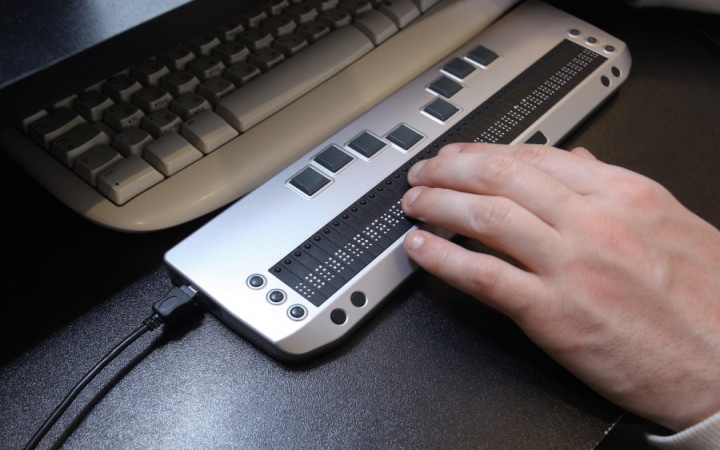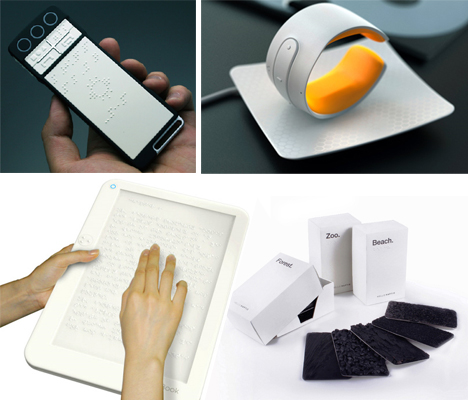Lightweight Technology for Low Vision: A Revolution in Accessibility
Lightweight Technology for Low Vision: A Revolution in Accessibility
Blog Article
Enhancing Lives With Advanced Assistive Gadgets for the Blind
The integration of innovative assistive devices for the blind is transforming exactly how people experience their surroundings and connect with their communities. What does this evolution indicate for the future of assistive modern technology and its role in empowering people?
Overview of Assistive Tools
Assistive tools for the blind include a diverse variety of modern technologies and tools made to enhance self-reliance and boost the lifestyle for individuals with visual impairments. These devices accommodate numerous requirements, from navigation and movement to interaction and everyday task administration.
One of the key groups of assistive devices includes flexibility help, such as white walking sticks and overview canines, which help users navigate their surroundings safely. Electronic traveling help, equipped with sensing units and audio responses, additionally play a considerable function in movement improvement.
Furthermore, gadgets that assist with day-to-day living activities, such as adaptive kitchen tools, Braille tags, and talking watches, encourage individuals to perform jobs separately. Communication aids, consisting of display readers and Braille displays, facilitate accessibility to details and allow individuals to engage efficiently with the digital globe.
Furthermore, low-tech solutions like amplifying glasses and large-print materials continue to be important for lots of individuals. Collectively, these assistive devices offer not only as useful devices yet likewise as essential enablers of autonomy, cultivating greater participation in a world that typically prioritizes sighted experiences. Their combination into day-to-day life is important for advertising inclusivity and enhancing overall health for those with visual problems.
Cutting-edge Technologies being used
Development in modern technology has actually substantially transformed the landscape of devices readily available for people with aesthetic disabilities. Amongst the most remarkable improvements are wise glasses incorporated with augmented fact, which give real-time navigating assistance and object recognition. These devices utilize advanced cams and fabricated intelligence to provide auditory signs, improving the user's spatial understanding and freedom.
Furthermore, mobile applications have actually become effective resources, making it possible for individuals to identify currency, read message aloud, and navigate unknown settings via verbal guidelines. Devices such as Braille displays and refreshable Braille devices continue to progress, offering seamless connection with smartphones and computer systems, thereby improving interaction and access to info.
Wearable technology, including smartwatches outfitted with voice-activated functions, better encourages customers by helping with quick accessibility to notifications and notifies without calling for visual involvement. Tactile maps and 3D printing are likewise acquiring traction, offering tangible representations of spaces that aid in orientation and wheelchair training.
Jointly, these cutting-edge innovations not only enhance the daily lives of visually damaged individuals but likewise foster greater self-reliance, inclusivity, and involvement with the broader community, therefore reshaping understandings of accessibility. (Wearable technology for low vision)
Personal Stories of Empowerment
Empowerment often arises from individual experiences that highlight the transformative influence of modern technology on individuals with visual impairments. Take, for example, the tale of Sarah, a young musician that restored her enthusiasm for painting through making use of a smart walking stick geared up with obstacle discovery. This gadget not only facilitated her movement but instilled a newfound confidence, allowing her to browse public rooms individually and seek her imaginative ventures.

These stories highlight the extensive impacts that progressed assistive gadgets can carry life. By allowing individuals to get over barriers, modern technology cultivates a sense of freedom and self-respect. Such empowerment stories act as a testament to the potential of development, highlighting just how the right tools can substantially boost lifestyle and open doors to new possibilities for those with aesthetic impairments.
Advantages of Advanced Solutions
The integration of sophisticated technology into assistive devices considerably transforms day-to-day experiences for those affected by vision loss. Wearable technology for low vision. Instruments such as smart walking canes geared up with sensing units, navigating apps, and wearable innovation are made to offer real-time responses, improving spatial recognition and reducing the risks associated with wheelchair.
Moreover, progressed assistive innovations promote social incorporation by promoting interaction and interaction. Voice-activated tools and applications enable people to gain access to info and involve with their surroundings independently, damaging barriers that formerly impeded their participation in instructional, expert, and social settings.
Furthermore, the customization and flexibility of these options satisfy the varied requirements of individuals, consequently boosting their total lifestyle. Enhanced capability, such as item acknowledgment and text-to-speech capacities, encourages individuals with visual impairments to perform tasks that they might have as soon as located challenging. Eventually, advanced assistive modern technologies not only boost freedom and safety and security yet likewise promote self-respect and self-respect, enabling individuals to lead fulfilling lives.
Future Patterns in Assistive Technology
As innovation remains to advance, the landscape of assistive devices for the blind is poised for remarkable innovations that will certainly additionally improve availability and self-reliance. Arising fads in assistive innovation suggest a shift toward increased integration of man-made intelligence (AI) and maker learning, enabling devices to adjust to specific customer requires in real-time. These advancements are anticipated to promote even more instinctive navigating systems that can identify obstacles and give audio comments, considerably boosting outside mobility.
Furthermore, the growth of wearable technology, such as clever glasses outfitted with augmented fact, will allow users to receive contextual details concerning their surroundings, consequently improving their spatial awareness. Improvements in haptic technology guarantee to produce tactile comments tools, enabling customers to regard info with touch, improving discovering and communication with their environment.
Telecommunication developments are also leading the way for remote aid services, where qualified professionals can provide assistance using video clip phone calls, making sure support is easily obtainable. As these fads unravel, the future of assistive devices for the blind will most certainly foster higher freedom, equipping individuals to navigate their world with confidence and ease.

Verdict
The combination of advanced assistive devices for the blind stands for a significant advancement in cultivating independence and boosting lifestyle. By using innovative technologies, these gadgets encourage customers to browse their atmospheres with higher self-confidence and read the full info here freedom. As the walk in vision exam near me field remains to progress, ongoing research and growth will likely yield even much more innovative remedies, additionally changing the lived experiences of individuals with visual problems and advertising a higher feeling of inclusion within culture.
The assimilation of sophisticated assistive gadgets for the blind is changing exactly how people experience their environments and interact with their neighborhoods. The combination of sophisticated modern technology into assistive devices dramatically transforms daily experiences for those influenced by vision loss.As technology proceeds to advance, the landscape of assistive devices for the blind is poised for exceptional improvements that will even more enhance accessibility and independence. Arising patterns in assistive modern technology suggest a change toward increased integration of synthetic intelligence (AI) and equipment understanding, making it possible for gadgets to adapt to specific user requires in real-time.The integration of advanced assistive gadgets for the blind stands for a significant development in promoting independence and enhancing quality of life.
Report this page